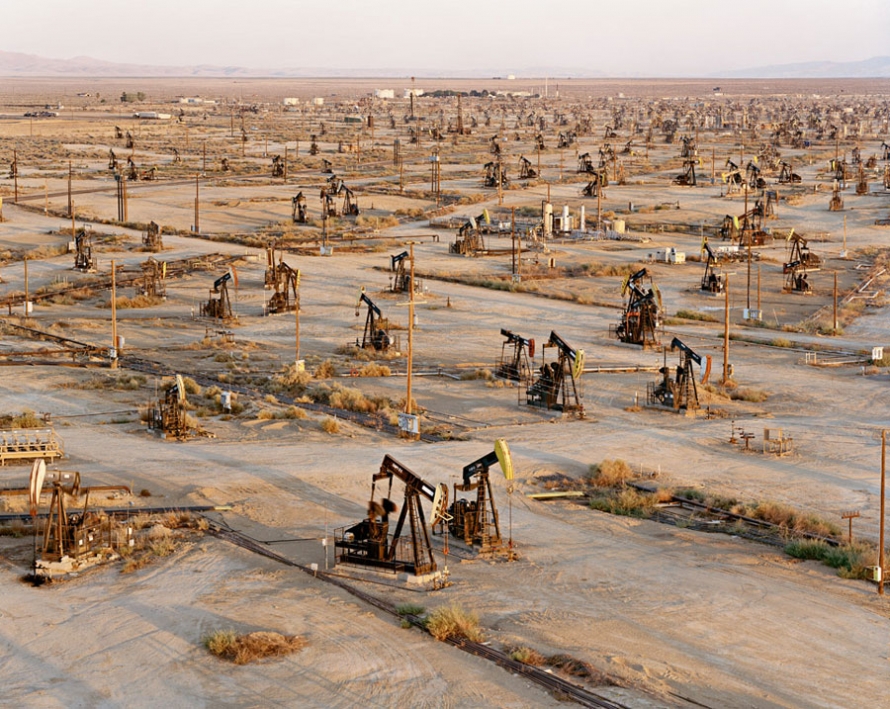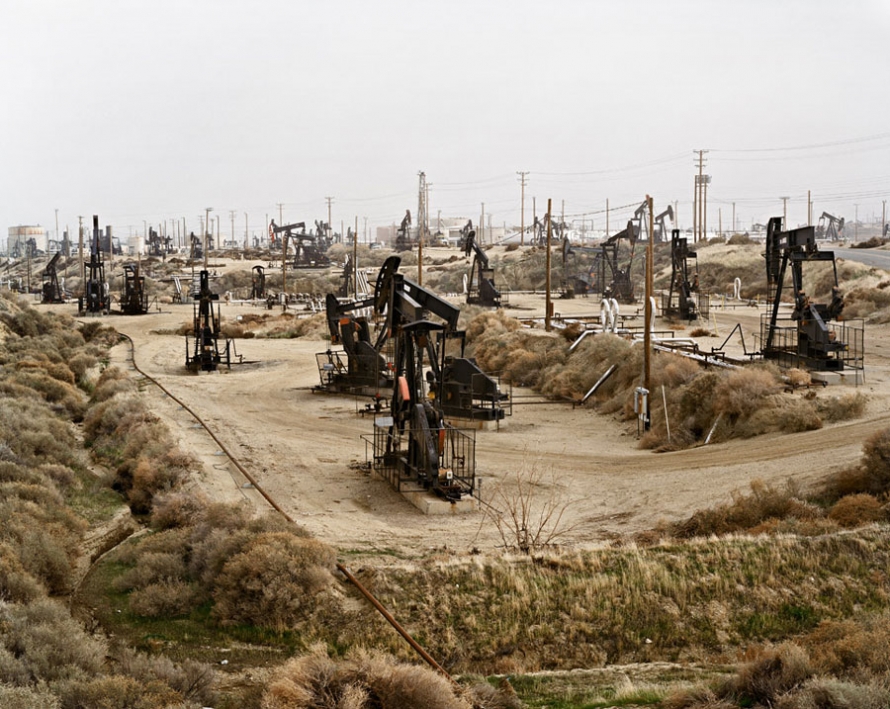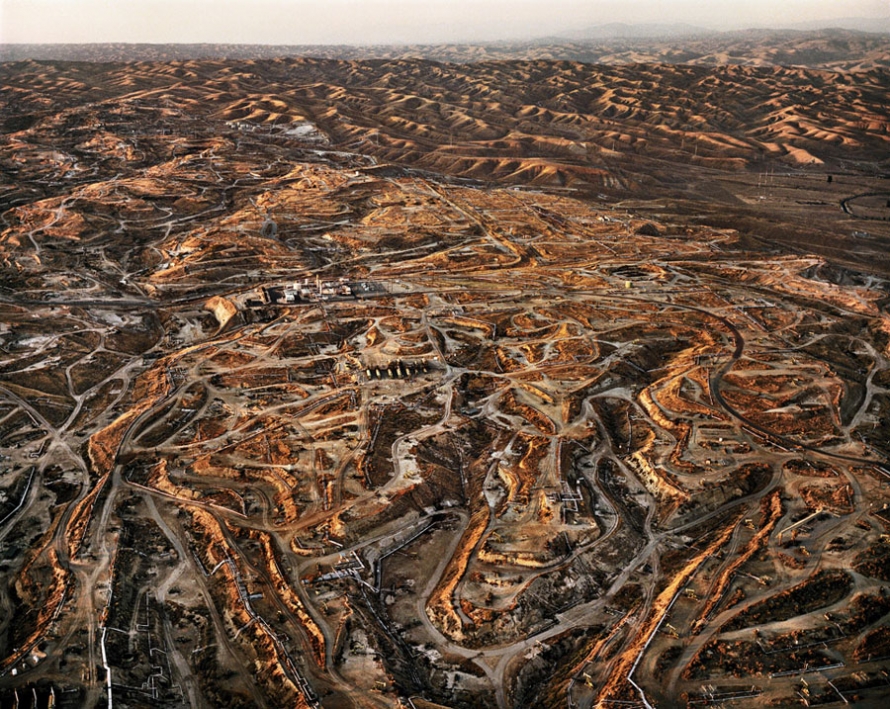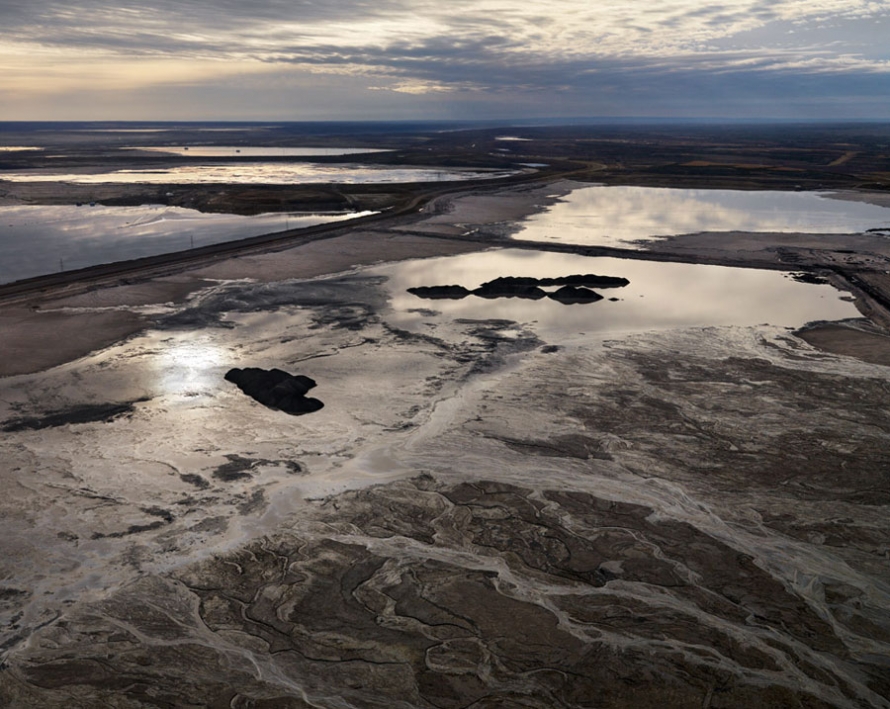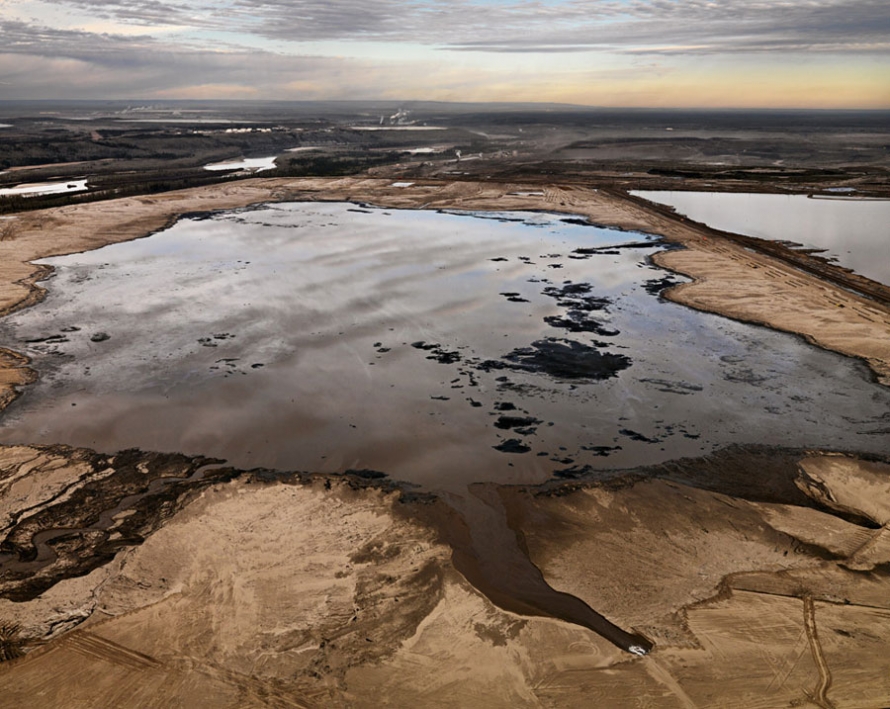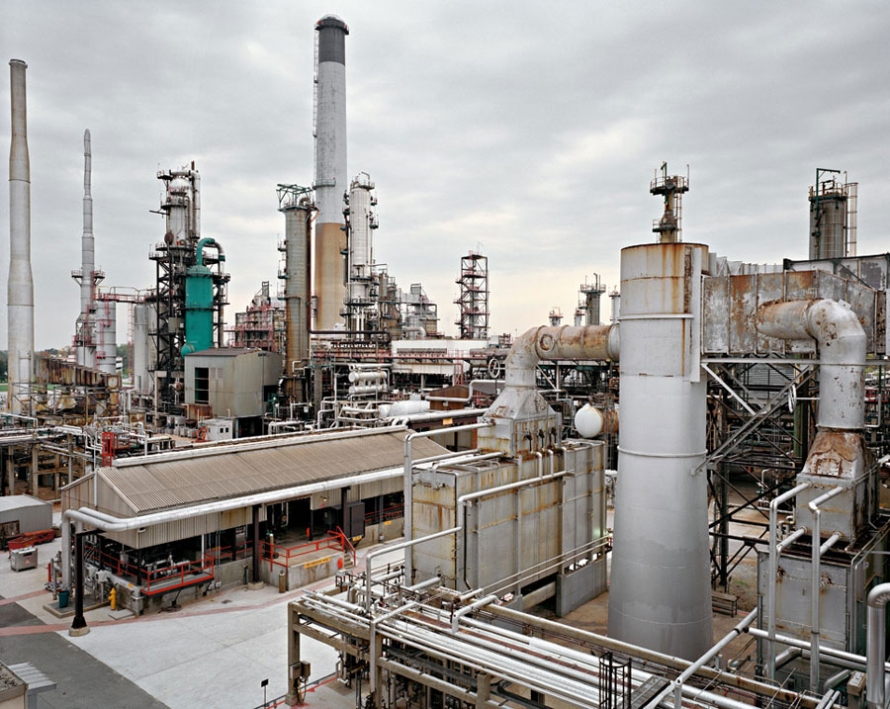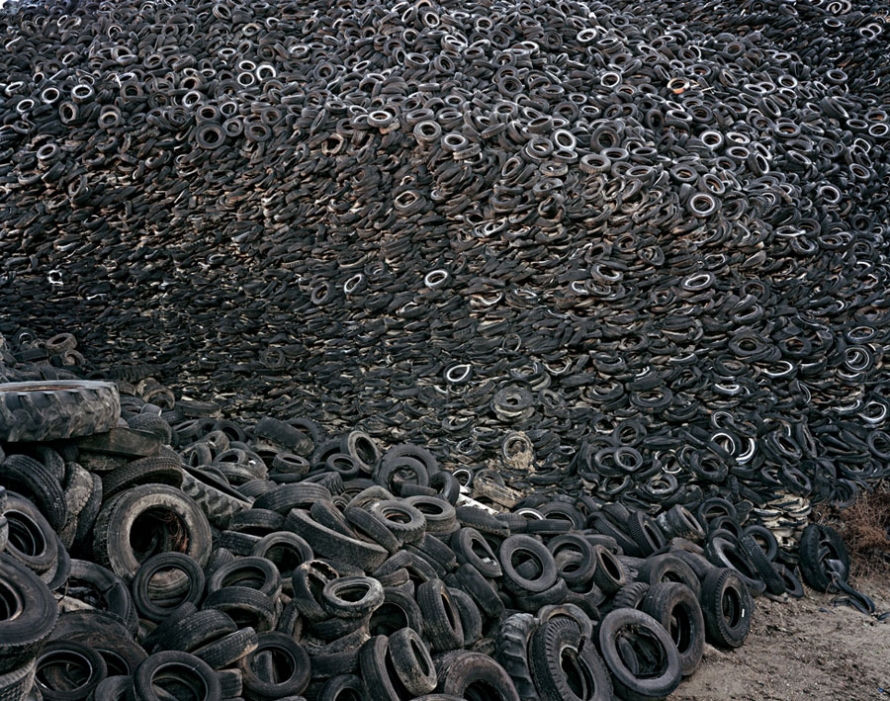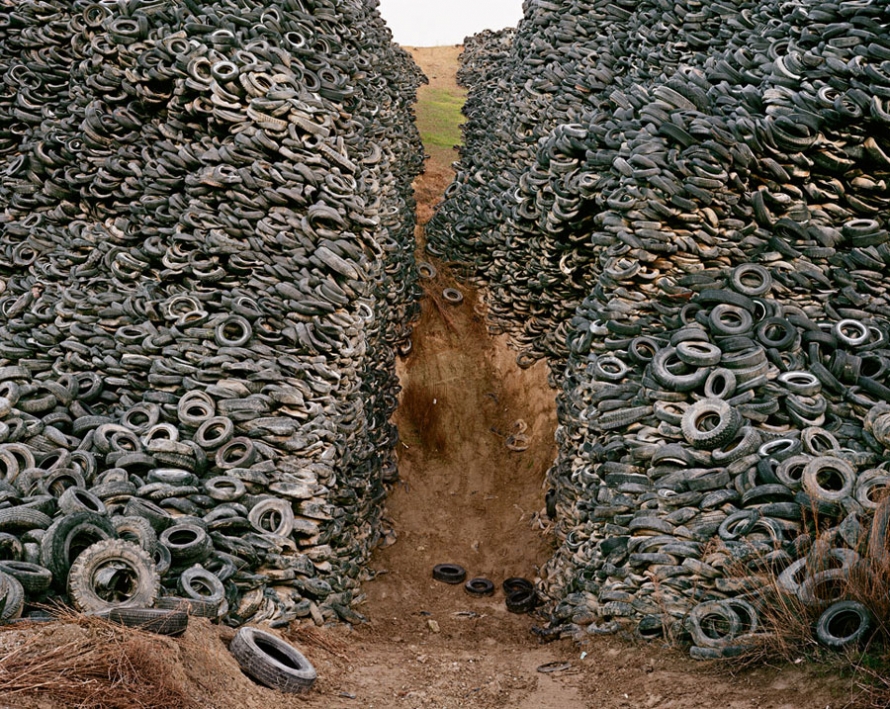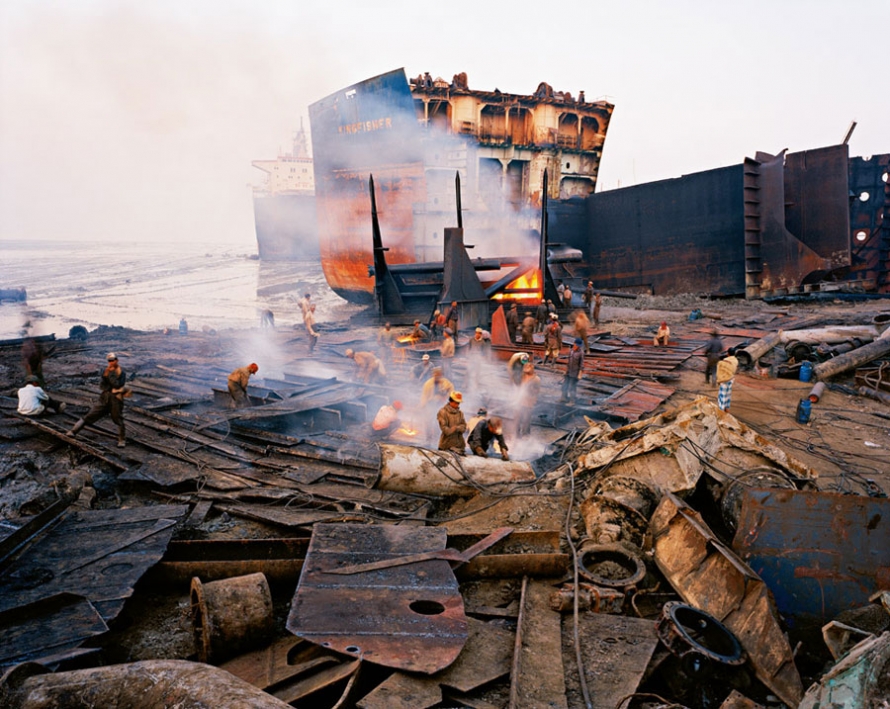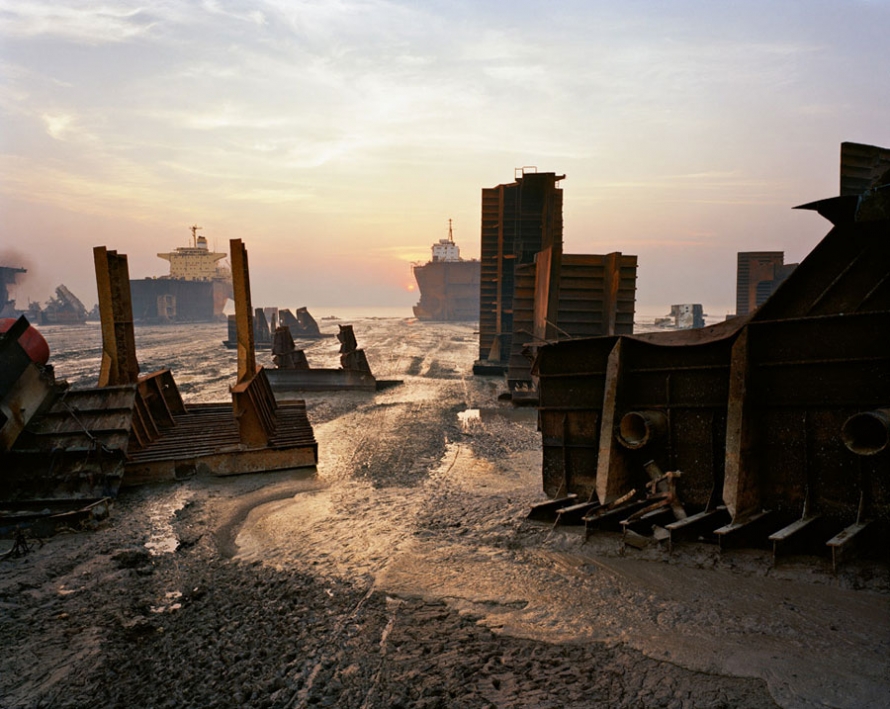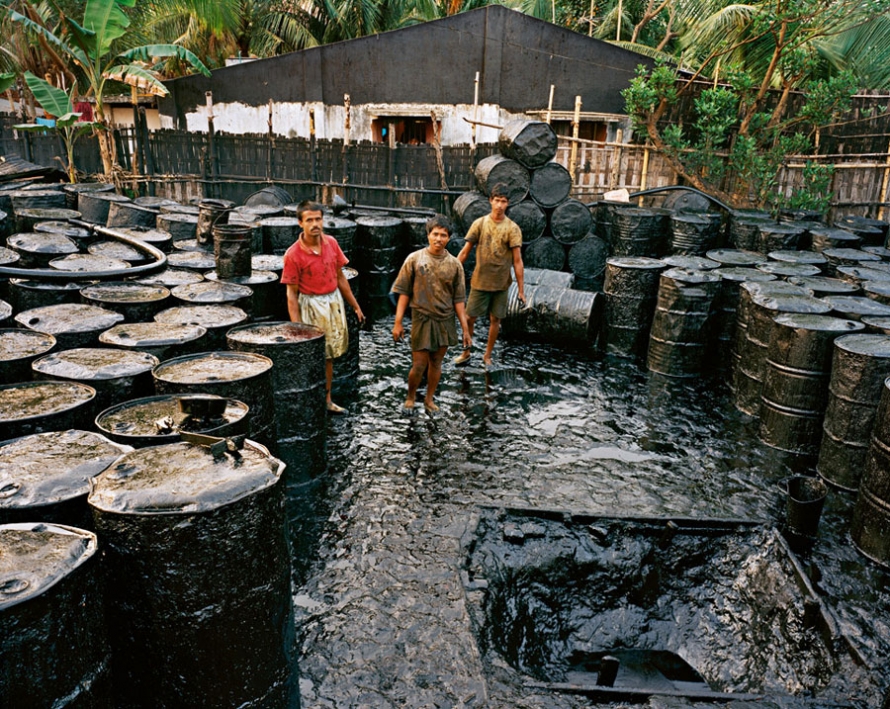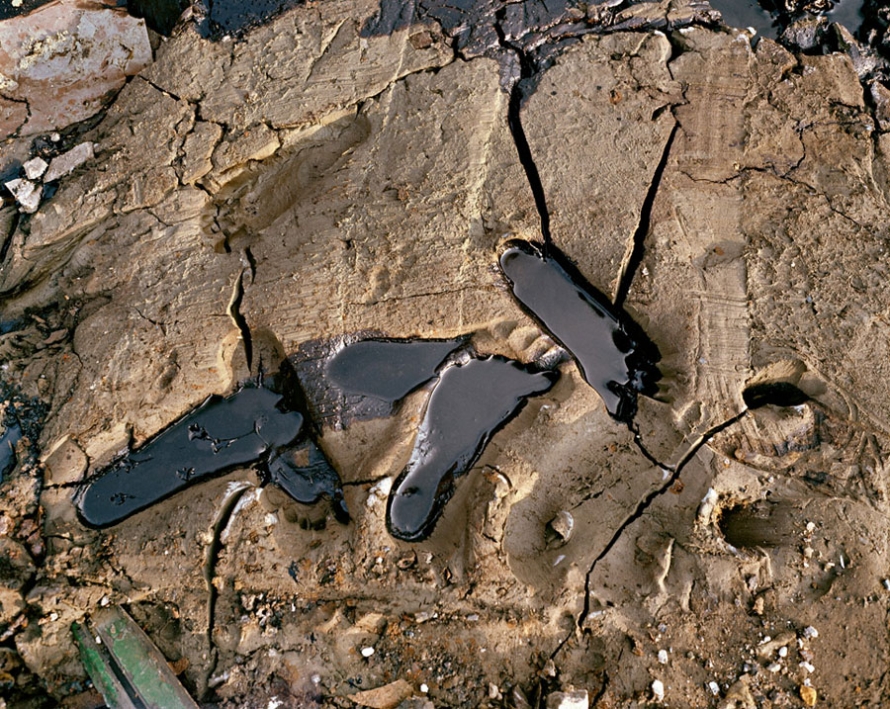We never see the origins or endings of oil products, only the versions we purchase. Edward Burtynsky brings us the oil industry’s fields, factories, and graveyards in large-format wall-sized photographs from around the world—Azerbaijan, China, Canada, California, and more. Burtynsky’s portraits document the industry’s massive scale, from its enormous towers and intricate pipelines to its mastery over natural landscapes, with both beauty and environmental awareness.
Photographer Edward Burtynsky lives in Canada. His work has been displayed at museums around the world, including the National Gallery of Canada, the Bibliotèque Nationale in Paris, and the Museum of Modern Art and the Guggenheim Museum in New York. He lectures on photographic art and has won multiple awards, including the TED prize and the Outreach award at the Rencontres d’Arles. “Oil” is on display at Hasted Hunt Kraeutler Gallery through Nov. 28, 2009. All photographs courtesy the artist, all rights reserved.
Why did you choose to focus on the oil industry?
I started thinking about oil as a theme in ’95 and actually started shooting it in ’97. The thing that occurred to me was that everything I was photographing before was somehow linked. All roads led back to oil as a source of energy that allows this kind of scaled expression to occur: our cities and our roadways and our bridges.
So at the same time I recognized like I did with copper mines or quarries where we engage with the material every day but we have no idea where that source is or what it looks like, it occurred to me that I didn’t know that about oil either. I’d never been to oil fields. I’d seen refineries in the distance at night and they look like jewels, but I’d never been inside one to see what it looked like. I started to meditate on oil and the world that it has built and started to try to make images that went a little bit further, maybe describing it but in more poetic terms.
What is it about oil? I’m hoping the viewer spends time with the images to understand what one man’s journey through a meditation on the idea of oil: what it means to our society, to our culture, and to the world at large.
Where do you think the industrial processes you photograph will be in 50 years?
You can go into three larger categories: the source, where the stuff comes from, and how it works to be transformed into products that we need. Then we have oil culture—the suburbs and the world that we built. I also looked at the kind of activities around machinery and oil like NASCAR racing, and all these other things that may be here now but not in 50 years.
So these things might all be something that happens at the peak of oil, at the frothing peak, but will fall off as oil becomes more and more of a scarce commodity and becomes more and more important to use towards critical enterprise versus frivolities, so to speak.
What is your interaction with the people who run these oil mines?
It’s been a difficult project to try and get the photographs. There’s been a reluctance to let photographers into these worlds, but there’s nothing—put it this way, there’s nothing I photographed that you couldn’t just go on Google Images, look for oil industries, and see all you want to see, whether it’s oil rigs or oil fields or whatever.
You can Google and see the power of that world. I’m not unlocking or showing any industry or trade secrets here. But at the same time there’s a high sensitivity knowing that the oil industry is coming under more and more pressure as a result of the fact that CO2 is now becoming a great source of concern: global warming.
Do you see your work as photographic journalism or photographic art?
I see my photographs as in a world of art. I work through walls, to experience being in front of one of these prints at a very large scale. I use large canvases, like 8' by 10' and 4' by 5', and I work to create exacting standards in terms of sharpness and focus. All of my work is created to that end, to be in that environment.
Editorial expressions of that work through other media and the web are all surrogates, experiences of the work, which also disseminate, but it’s not what I work towards. I work towards the prints in galleries which people can experience for as long as they want, absorbing the image. That is my intention, that is how I make my work.
I do share some moral things with journalism. I think I tell stories, but they’re not current events. These are all intentional landscapes that are evolving incrementally on a day-to-day basis. This is an intentional world that we are building—I’m just trying to show that world, so it’s not like a newsstand. There is no news flash here, nor is it a documentary. If I was getting into a documentary on oil, I might say, well I’ve got to include Venezuela and Nigeria and Saudi Arabia, this and that and this and that, but not including myself in the bowl of sand. I’m not trying to make an exhaustive documentary on every oil country in the world. I’m trying to have these images stand in for a larger kind of thing going on up there. That makes it not journalistic or documentary, but more of an artist trying to bring home a bunch of ideas into existence through the use of photography.
Are your photos intended for group viewing or personal contemplation?
I don’t know how much to make of the group experience. More or less, I produce the work for the individual, so the individual can get a kind of body experience in front of one of these things. And I hope it doesn’t fall apart, that they can still kind of go in, get a sense of scale, see that there’s a figure in the landscape a quarter of an inch high in a five-foot print.
What is your interaction with the people working in the oil industry, who are nearly invisible to the eye in your photos?
I think that the people working in these places are always fascinated by the process because, generally speaking, nobody goes and photographs these places. So they rarely ever see anybody, you know, paying that kind of attention to the thing that they do. They want to see my Polaroids, they want to talk to me, they want to know what I’m doing and who I’m working for. They’re often quite intrigued about the fact that as an artist I’m just designing these projects on my own, out there on my own doing my own negotiations and my own promotion, paying my own way. I’m not working for a magazine, I’m not working for a paper, I’m not working for the company. I’m doing it all on my own initiatives and that’s often very interesting to them. They find it kind of refreshing.
How do the shoots actually come together?
I go out and research for probably two or three months and then go shoot for maybe three weeks. Each situation is different. I usually work with assistants or hire people. People in the country I’m going to do advance work for me and send me digital files of potential locations. Usually, when I arrive, I know exactly what I’m doing to some degree. I don’t know exactly what the pictures are going to be, but I know where the subjects are, how much time I’m going to spend with them, the time of year when the weather conditions are ideal. All those kinds of things are researched ahead of time. So, when I’m there, I’m usually at the best time of year where the lights are the most interesting with subjects who give me variety in terms of trying to figure out what I want to do. I spend probably three to four months of the year actually shooting and the rest of it doing research or dissemination of where I’m having exhibitions.
Can industry and capitalism co-exist with sustainability?
I think it’s possible, but I don’t think it’s possible until governments come in and put in level playing fields and put in policies that everyone’s going to abide by. But it’s not going to happen by itself. It can only happen with government intervention. And that kind of action may actually have an effect on governments’ bottom line in terms of the amount of time, taxes, and possibly consciously putting a country into recession as a direct act of trying to save the environment, which within a democracy is like committing hara-kiri. But I think that through smart policies and through incentivization—using carrot sticks to drive technology in the direction that you want it to go—it can be done without destroying what we built. You still have to be hopeful though. It’s just a question of whether we get there fast enough; things are moving much quicker than expected in terms of climate change.
I’m an advocate for sustainability, because otherwise it’s a pretty cynical view of the world—it’s just, “I want to take care of myself” and “I don’t give a shit about the next generation.” It’s not very nice, especially if you have kids yourself. When your kid has a world to inherit you better start thinking now.
What are you working on now?
I’m doing a big project on water, so just kind of starting to look at the evidence and the infrastructure of water. I don’t know where I’m going with it, but I’m off to a good start. I’ve already finished shooting California. Now I’m starting to plan what’s next.
